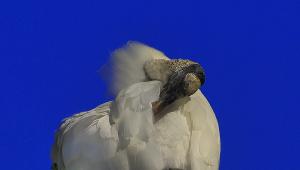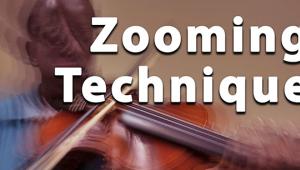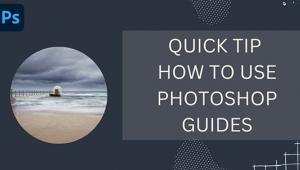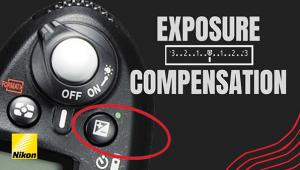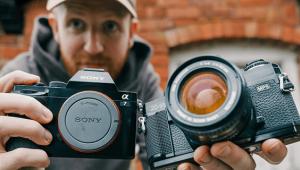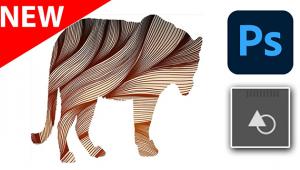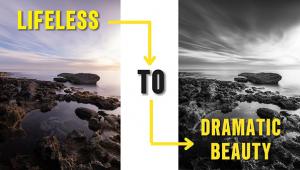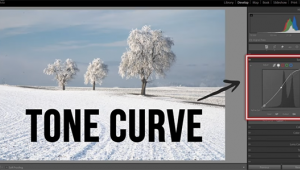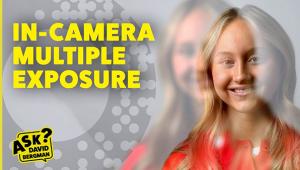The Same, Only Different; Format, Angle Of View, And Image Quality Page 2
Now consider a bigger but less sharp image (lower acutance) that is enlarged 6x vs. a smaller, sharper image (higher acutance) that is enlarged 12x. Both may contain exactly the same amount of fine detail, but they are bound to look different because the edge effects are enlarged to different degrees. Taking an 8x10" enlargement, and assuming a perfect enlarger lens, 100 lp/mm on 35mm at 8.5x will give just under 12 lp/mm on the print, while 80 lp/mm on 6x9cm at 3.6x will give just over 22 lp/mm.
There is no such thing as a perfect enlarger lens but this further favors
the rollfilm image because losses at low frequencies are less than losses at
high frequencies: instead of 12 and 22 lp/mm on the 8x10" print, we might
reasonably expect 9-10 lp/mm from 35mm and 18-20 lp/mm from 6x9cm.
Even with a mere 50 lp/mm on 6x9cm, a 3.6x enlargement equates to almost 14
lp/mm with a perfect lens and better than 12 lp/mm in the real world, so the
worst you can expect from roll film should be better than the best you can expect
from 35mm.
This is why, to this day, ultimate quality is still achieved by contact printing,
just as it was 100 and more years ago. The difference is that with modern lenses,
films, and developers you can come much closer to contact-print quality at ever-greater
degrees of enlargement. In the 1930s, it was widely reckoned that 1.5x to 2x
was the limit before you could see that it was not a contact print. Today it
is more like 3x to 6x: as the enlargement ratio rises, it is harder and harder
to maintain near-contact-print quality.
|
|
|
A 3x enlargement from 6x9cm should give you near-contact-print quality using
most decent cameras, lenses, and films. This is 63/4x93/4". A 6x enlargement
from 35mm will need fine-grained film and developer and a top-grade camera lens
to get near-contact-print quality. This is just under 6x9". Once again,
the best you can hope for from top-flight 35mm is slightly inferior to the least
you can hope for from decent-quality 6x9cm.
Even then, this isn't the whole story. There are aesthetic and compositional
differences as well as technical ones between the pictures I take with 15mm
on 35mm and 35mm on 6x9cm. I perceive more intimacy, more connection with the
subject in my medium format shots. As I said at the beginning, this must be
related to how I use the cameras.
This may in part be down to the viewfinders for the two lenses: the shape and
the amount of distortion may influence the way I compose the shots. Also, even
though the lenses are theoretically identical in their angle of coverage, the
15mm f/4.5 on 35mm is just a little wider than my 35mm f/5.6 on 6x9cm. I think
this is because the 15mm "sees under" the edges of the film gate
more. Regardless of the reason, I tend to come in closer with the medium format
lens.
Perhaps more importantly, there is some vignetting with the Rodenstock APO-Grandagon
on 6x9cm, especially if I use the rising front. I could use a center-grad filter,
but I prefer to use the vignetting creatively. Consequently, I compose with
this in mind. When I compose a small format shot on the 15mm Heliar, I visualize
it differently. I print most of my 35mm shots with a good-size border and a
filed-out negative carrier.
Another major factor is filtration. It is easy to put a filter to the front
of the APO-Grandagon, but not so easy to cut a gel filter and tape it over the
back element of the Heliar. I rarely filter the smaller format pictures, so
I tend to compose quite differently. I often let a dramatic sky dominate the
6x9 image because I know the filter will enhance the cloud detail.
Until I wrote this article I didn't really understand just how differently
I use the two formats. But even when I compose what I believe to be similar
pictures with 15mm on 35mm and 35mm on 6x9cm, I achieve a much higher percentage
of success with 6x9cm because the technical quality is higher.
Unfortunately it is hard to see the differences in reproduction, because (by
definition) all the pictures are photomechanically reproduced. The only way
to understand this is to look at as many original prints as possible.
You don't need to look for pictures by Big Names, though. Go to a good
local camera club. You may be amazed. Certainly, you will not come away and
ask a question I recently saw on the Internet: "Is it possible to make
prints at home that are as good as the ones you see in books and magazines?"
Instead, you might start asking, "Why can't books and magazines
begin to approach the quality you can get from a good traditional silver-halide
print?"
Well, that's another question, and I'm not yet sure I've answered
even my original question fully. To a certain extent, it all comes down to something
else that is often seen in photography: alchemy, rather than science. Even so,
I now understand more about why I take different pictures with my Alpa than
with my Voigtländers. Ultimately, though, it seems to bear out the old
photographers' saying from the '30s, borrowed from the boxing ring:
a good big 'un will always beat a good little 'un.
- Log in or register to post comments



